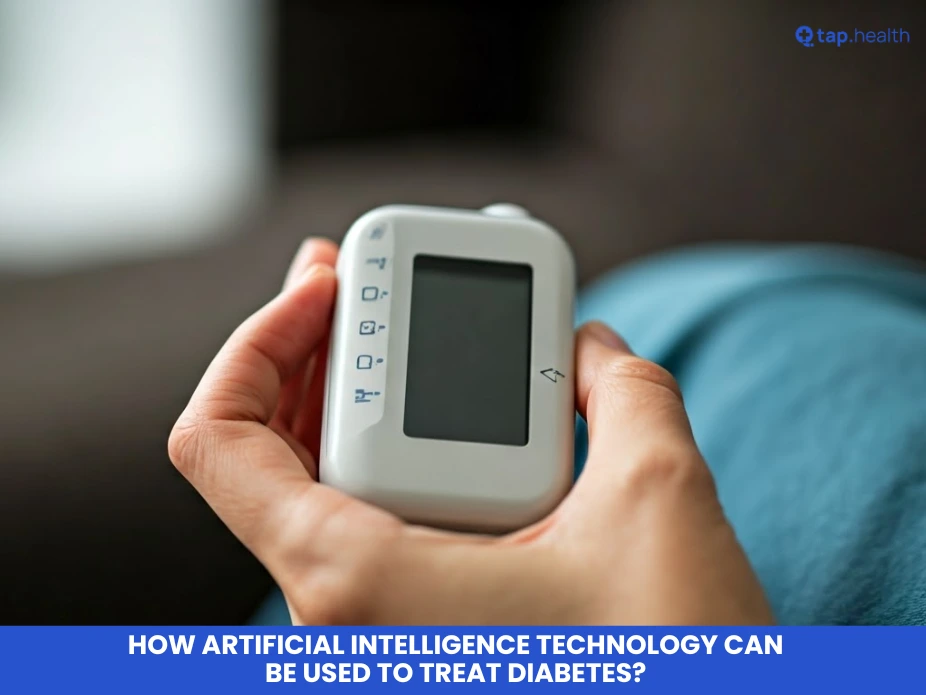Artificial intelligence (AI) is reshaping the landscape of diabetes care, offering innovative solutions for managing this chronic condition. From personalized treatment plans to early detection of complications, AI-driven technologies are improving patient outcomes and quality of life. This blog explores the key ways AI is revolutionizing diabetes management, addressing common questions like how AI helps treat diabetes, its role in early detection, and its impact on insulin delivery. With a focus on affordability, accessibility, and advancements in India, we’ll dive into the transformative potential of AI in diabetes care.
What Is Artificial Intelligence in Diabetes Care?
AI in healthcare involves using advanced algorithms and machine learning to analyze vast amounts of data, uncovering patterns that enhance diagnosis and treatment. In diabetes care, AI processes patient data, such as blood glucose levels, medical history, and lifestyle factors, to provide tailored solutions. By integrating AI into diabetes management, healthcare providers can improve glycemic control, predict complications, and empower patients to take charge of their health.
The Role of AI in Modern Diabetes Management
AI’s ability to analyze complex datasets makes it a game-changer for chronic disease management. It automates tasks, enhances diagnostic accuracy, and personalizes treatment plans, making diabetes care more efficient and accessible. By leveraging predictive analytics, AI identifies high-risk patients, enabling early interventions that reduce long-term complications. This technology also supports remote monitoring, making it easier for patients to manage their condition from home.
How AI Enhances Early Detection of Diabetes
Predictive Analytics for Risk Assessment
AI uses predictive analytics to identify individuals at risk of developing diabetes. By analyzing medical records, genetic data, and lifestyle factors, machine learning models can predict diabetes onset with high accuracy. This allows healthcare providers to recommend preventive measures, such as dietary changes or increased physical activity, to delay or prevent the disease.
- Key Benefits:
- Early identification of at-risk individuals.
- Personalized preventive strategies.
- Reduced healthcare costs through proactive care.
Personalized Treatment Plans with Machine Learning
Machine learning enables AI to create tailored treatment plans by analyzing data from continuous glucose monitors (CGMs), insulin pumps, and patient lifestyle choices. These plans include customized diet recommendations, exercise regimens, and medication adjustments, improving glycemic control and reducing complications.
- How It Works:
- AI processes real-time data to identify patient-specific patterns.
- Recommends precise insulin doses and lifestyle changes.
- Adapts plans based on ongoing patient feedback.
AI-Powered Technologies for Diabetes Management in India
India, with its high diabetes prevalence, stands to benefit significantly from AI-driven tools. Mobile apps and wearable devices are making diabetes management more accessible, but challenges like affordability and digital access in rural areas remain.
Mobile Apps for Real-Time Monitoring
AI-powered mobile apps connect with CGMs to provide real-time blood glucose tracking. These apps offer personalized feedback, dietary suggestions, and medication reminders, empowering patients to manage their condition effectively.
- Features:
- Real-time glucose monitoring.
- Alerts for abnormal blood sugar levels.
- Nutritional and exercise tracking.
Wearable Devices for Continuous Glucose Monitoring
CGMs, enhanced by AI, provide continuous blood glucose data, enabling patients to monitor trends and receive personalized recommendations. These devices improve glycemic control by offering real-time insights and reducing the need for manual testing.
AI-Driven Insulin Delivery Systems
Smart Insulin Pumps and Pens
AI-powered insulin pumps and smart pens adjust insulin doses based on real-time glucose data, mimicking a healthy pancreas. These devices reduce the burden of manual adjustments and lower the risk of hypoglycemia.
- Benefits:
- Automated insulin delivery.
- Personalized dosing algorithms.
- Integration with CGMs for real-time adjustments.
Automated Insulin Delivery (AID) Systems
AID systems use AI to analyze CGM data and deliver insulin automatically, improving glycemic control. These systems adapt to individual patient needs, reducing the risk of adverse glycemic events.
AI in Diabetic Retinopathy Screening
Diabetic retinopathy, a leading cause of blindness, can be detected early using AI-powered screening tools. These tools analyze retinal images to identify early signs of damage, enabling timely treatment to prevent vision loss.
- Key Features:
- Automated analysis of retinal images.
- High accuracy in detecting lesions.
- Accessibility in underserved areas.
Managing Cardiovascular Risks with AI
Diabetes increases the risk of cardiovascular disease (CVD). AI models predict CVD risks by analyzing patient data, such as medical history and lifestyle factors, allowing for early interventions like medication adjustments or lifestyle changes.
- Applications:
- Predicting heart disease risk in diabetic patients.
- Personalizing cardiac care plans.
- Remote monitoring of vital signs.
Overcoming Challenges in AI Adoption
Data Privacy and Security
Protecting patient data is critical in AI-driven diabetes care. Strong encryption, secure storage, and compliance with regulations like HIPAA and GDPR ensure patient trust and data safety.
Bridging the Digital Divide in India
To make AI accessible, India must improve internet connectivity in rural areas, reduce device costs, and enhance digital literacy. Collaboration between governments, healthcare providers, and tech companies is essential.
Future of AI in Diabetes Care
The future of AI in diabetes care is promising, with advancements like closed-loop insulin systems and quantum computing on the horizon. These technologies will further personalize care, improve complication detection, and enhance patient outcomes.
Conclusion
Artificial intelligence is revolutionizing diabetes care by enabling early detection, personalized treatment, and automated insulin delivery. In India, AI-powered tools like mobile apps and CGMs are making management more accessible, despite challenges like affordability and digital access. As AI technology evolves, it promises to further transform diabetes care, offering hope for better health outcomes and improved quality of life for millions.



